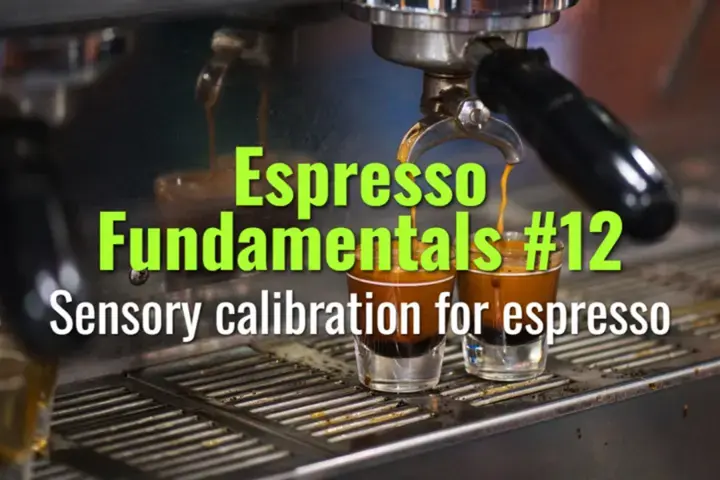Sensory calibration for espresso
How baristas and tasters align their sensory perception of espresso to ensure consistent evaluation and recipe adjustments.
- Coffee Basics Nerds
- 1 min read
Article 12 of 12 in Espresso Fundamentals/

Why Sensory Calibration Matters
- Espresso is intense and concentrated, amplifying both desirable and undesirable flavors.
- Calibration ensures multiple baristas describe and respond to taste consistently.
- Reduces subjectivity and creates a shared language for quality control.
Key Calibration Dimensions
- Acidity: Sharpness vs brightness; distinguish pleasant citrus from sour under-extraction.
- Sweetness: Caramelized sugar, fruit, or chocolate-like notes; indicator of balanced extraction.
- Bitterness: Natural in espresso but should be integrated, not dominant.
- Body: Texture and weight (syrupy, creamy, thin).
- Aftertaste: Length, cleanliness, and pleasantness of the finish.
Calibration Practices
- Team Cupping/Shot Tasting:
- Pull identical shots and have staff describe flavors.
- Compare descriptors to align language (e.g., “bright” vs “sour”).
- Extraction Contrast Training:
- Taste deliberately under- and over-extracted shots.
- Build shared reference points for imbalance.
- Scoring Frameworks:
- Use adapted SCA espresso cupping forms.
- Focus on repeatable criteria rather than subjective preferences.
Practical Tips
- Keep tasting sessions short (espresso fatigue sets in quickly).
- Rotate calibration exercises weekly or when new coffees arrive.
- Encourage descriptive accuracy over judgment (“citrus acidity” vs “too sour”).
Summary
Sensory calibration ensures that espresso evaluation is consistent across baristas and tasters. By aligning perceptions of acidity, sweetness, bitterness, body, and aftertaste, teams can make precise, shared adjustments to recipes and maintain quality for customers.